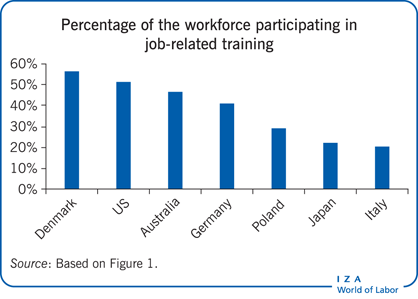Elevator pitch
Workers participating in firm-sponsored training receive higher wages as a result. But given that firms pay the majority of costs for training, shouldn’t they also benefit? Empirical evidence shows that this is in fact the case. Firm-sponsored training leads to higher productivity levels and increased innovation, both of which benefit the firm. Training can also be complementary to, and enhance, other types of firm investment, particularly in physical capital, such as information and communication technology (ICT), and in organizational capital, such as the implementation of high-performance workplace practices.

Key findings
Pros
Workers undertaking firm-sponsored training improve their skills and receive higher wages as a result.
Firm-sponsored training increases productivity, as measured by sales or value added per worker.
Innovation performance also improves in firms that invest in training.
Larger firms and firms investing in physical capital (IT) and/or organizational capital provide more training due to the benefits of complementarities.
There is evidence that returns are higher in firms that invest in both training and in physical and organizational capital.
Cons
Some workers, particularly older workers and less-educated workers, receive less firm-sponsored training.
Smaller firms tend to favor informal training and provide less training overall than larger firms.
There is little data on the cost of training, which makes it difficult to measure the return-on-investment of training for firms.
There is a lack of research on the effects of training on some important measures of firm performance and workers’ well-being.